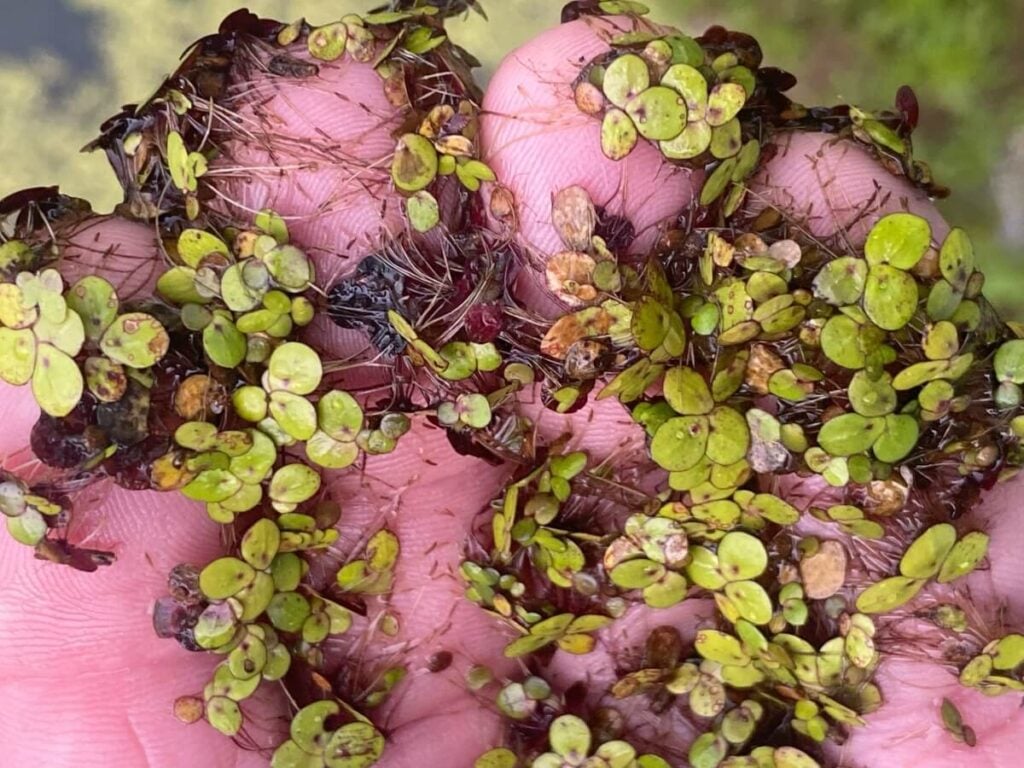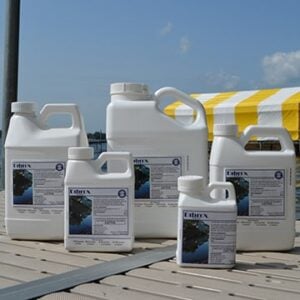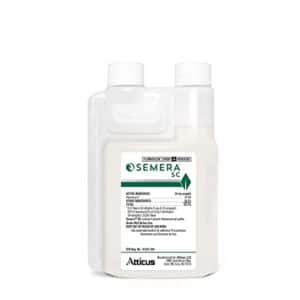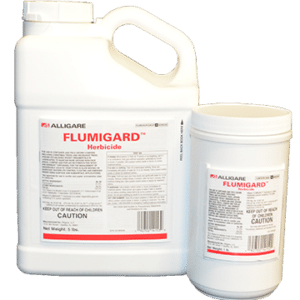
Control Duckweed
Duckweed growth covering 30%-50% of a pond can provide food for ducks and waterfowl. However, duckweed can often overtake entire ponds. High coverage of 80%+ can cause hypoxia (low oxygen for fish and aquatic life) and produce greenhouse gases. The following options can be considered for how to control duckweed.
Click here to read more about identifying this plant.
Manual/Mechanical Control:
If you are considering how to remove duckweed, physically seining this plant can be a somewhat effective method of control. Be sure to pull out every piece of duckweed. Physical control can be difficult because duckweed can re-grow from any buds remaining in the water and can double in days.
Herbicide Control:
There are multiple options for how to kill duckweed that offer great control. Correct identification is important. Duckweed is often mixed with other floating plants; those plants may or may not need the same herbicides.
- Dibrox (for ponds or lakes) – liquid that is diluted with water and sprayed over the plants, fast acting. Dibrox is the workhorse of duckweed control with results in as little as 1-3 days.
- Spritflo (for ponds with no outflow) – liquid that is poured and spreads throughout the entire body of water, offers extended control.
- Semera or Flumigard + surfactant (for ponds or lakes) – granules that are dissolved and mixed or liquids that are mixed and diluted with water and sprayed over the plants (early morning is best), fast acting.
Treatment Tips:
When treating duckweed,
- It is important to apply product evenly over all active plant growth; duckweed can replicate rapidly from untreated or surviving plants.
- Make sure you have identified the correct plant. Duckweed and watermeal are often confused. Proper identification can help save time, effort, and money.
- Spritflo can be used at the first signs of growth.
Recommended Products
-
Dibrox®
$25.00 – $142.00 -
Spritflo®
$129.99 – $1,899.99 -
Semera®
$74.00 – $449.00 -
Flumigard®
$74.00 – $449.00





